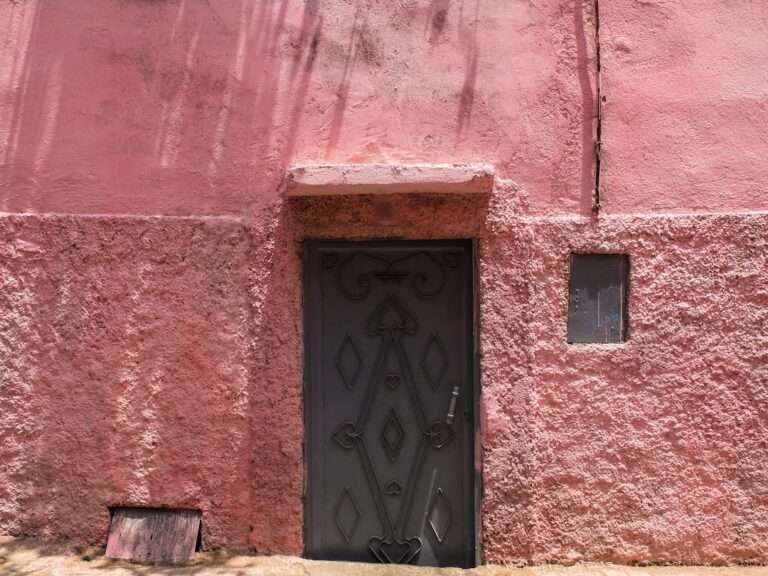How were the Labrys symbols used in ancient Minoan culture?

An important part of Minoan history and culture is the double-headed axe, or Labrys symbol. “Labrys” is a term that comes from the Minoan language and describes a particular kind of double-headed axe that was very common in Minoan society. The emblem, which is commonly found in Minoan religious objects, art, and architecture, is a long-handled axe with two opposing blades. Researchers studying archaeology and history are currently studying the Labrys because they relate it to ideas of authority, power, and the divine feminine.
Key Takeaways
- The Labrys symbol is a double-headed axe that holds significant cultural and religious importance in Minoan civilization.
- In Minoan religion and rituals, the Labrys was used as a symbol of power and authority, often associated with the goddesses and female deities.
- The Labrys was prominently featured in Minoan art and architecture, appearing on frescoes, pottery, and even as a decorative motif in palaces and buildings.
- The Labrys symbol was a representation of power and authority, often associated with the ruling elite and used as a mark of status and influence.
- The Labrys played a role in Minoan trade and commerce, as it was used as a symbol of authority and power in economic transactions and negotiations.
Numerous instances of the Labrys symbol have been found during archeological excavations conducted in Crete, the center of Minoan civilization. Evidence points to its use in everyday life as well as religious rites, highlighting its significance in Minoan society. The symbol’s widespread recognition and significance within Minoan culture is further evidenced by its presence on seals, jewelry, and other artifacts. As scholars work to completely comprehend the significance and function of the Labrys in Minoan civilization, they continue to spark scholarly discussion & interpretation.
The emblem of the Divine Feminine. In religious rites and ceremonies, the double-headed axe was frequently utilized as a representation of the divine feminine. It appears to have had a unique significance in Minoan religious practices based on its presence in sacred areas and religious artifacts. A representation of authority and power. In religious ceremonies, the Labrys symbol may have served as a symbol of power and authority or in sacrificial rituals, in addition to its association with the goddess.
Given that it can be found in religious settings, it was probably a significant symbol in Minoan religious practices and beliefs. establishing a connection with God. The Minoans may have sought the aid of the gods and goddesses and established a spiritual connection through the use of Labrys in religious rites.
The Labrys’ significance as a representation of heavenly authority and spiritual strength is highlighted by its significance in Minoan religion. The significance of the Labrys symbol in Minoan society is demonstrated by its frequent appearance in both art and architecture. The fact that the symbol appears on seals, paintings, ceramics, and other artistic creations suggests that Minoan artistic traditions placed a particular value on it. The fact that the Labrys appears in Minoan art suggests that the Minoans valued and were aware of this symbol on a large scale.
A variety of Minoan buildings, including palaces, temples, and other significant structures, have the Labrys symbol. Its inclusion in architectural plans implies that Minoan society gave it symbolic or religious significance. Perhaps the Minoans used the Labrys as a means of communicating ideas about power and authority or giving their structures a spiritual or divine significance. The Labrys is a prominent figure in Minoan art and architecture, which emphasizes its significance as a representation of religious belief and cultural identity. Its inclusion in contexts related to art and architecture implies that it was a symbol that was integral to Minoan culture and had a great influence on Minoan expression.
Power and authority are frequently linked to the Labrys symbol in Minoan culture. Its double-headed axe design exudes strength and dominance, and the fact that it can be found in a variety of Minoan artwork and architectural designs implies that it served as a representation of social and political authority. The Minoans may have attempted to establish their supremacy and control over their society by using the Labrys as a symbol of authority. The Labrys may have also been used as a symbol of military might and prowess in addition to its association with political power. Due to the double-headed axe’s symbolic meaning of martial power and its frequent use in military settings, it appears to have been connected to battle and conquest.
The Minoans may have wanted to project an image of strength and invincibility & to assert their dominance over their enemies by using the Labrys as a symbol of military might. Its significance as a representation of social & political dominance in Minoan society is underscored by the association of the Labrys with power and autonomy. Due to its presence in a variety of contexts, it appears that Minoan culture’s political and social dynamics were significantly shaped by this symbol. It’s possible that the Labrys symbol was used in Minoan trade and commerce. Its appearance on jewelry, seals, and other artifacts implies that the Minoans were familiar with & respected this symbol, & it’s possible that they utilized it as a trade mark to denote authenticity or superiority. The Labrys may have been a trade symbol used by the Minoans to establish their identity & reputation as expert craftsmen & traders.
Apart from its commercial function, the Labrys could have served as a representation of financial strength & affluence. The fact that seals & other commercial artifacts have it on them implies that it was a symbol of success and prosperity, and merchants may have used it to communicate their position and power in Minoan society. The Labrys’ significance as a social & economic status marker in Minoan culture is highlighted by its use as an economic symbol. As a representation of wealth and economic strength in Minoan society, the Labrys are further highlighted by their association with trade and commerce. Its appearance on trade items implies that it was a significant symbol that influenced the Minoan culture’s economic dynamics. The decline is being caused by internal factors.
It is thought that the Labrys symbol declined in significance in the later phases of Minoan civilization, though this decline is not fully understood. The Labrys symbol may have lost use or taken on new forms as Minoan society experienced a number of shifts and upheavals, including foreign invasions. There is a possibility that the demise of the Labrys symbol was connected to more significant modifications in Minoan culture, such as adjustments to political, religious, and economic systems.
The decline’s external influences. There’s a chance that outside forces, like the impact of foreign societies & cultures on Minoan civilization, also played a role in the symbol’s decline. The use of the Labrys symbol may have declined or been supplanted by other symbols and cultural expressions as outside influences started to have a bigger impact on Minoan society. As Minoan culture changed to accommodate new social, political, and economic realities, the Labrys symbol may have declined in significance. The Labrys Symbol’s Heritage.
A period in Minoan culture came to an end with the decline of the Labrys symbol, but its legacy endured for centuries as a potent representation of Minoan identity and ancestry. Being a potent symbol of Minoan culture and heritage, the Labrys symbol has a lasting legacy even in contemporary times. Scholars, artists, & enthusiasts of today have embraced the symbol in an effort to comprehend its meaning and save its legacy for coming generations. The Minoans’ rich cultural legacy and their contributions to art, religion, and society are remembered through the Labrys symbol’s enduring legacy. Various groups have adopted the Labrys symbol as a representation of female empowerment and strength in modern times.
Its connection to the divine feminine has made it a crucial symbol for global feminist movements, which aim to recover its historical value as a representation of female dominance and strength. Given its long history as a feminist symbol, the Labrys symbol is a potent representation of strength and perseverance that will always be relevant. The Labrys symbol’s history is proof of the timeless ability of archaic symbols to enthrall & inspire contemporary audiences.
Its significance as a time- & place-transcendent symbol of cultural identity and legacy is highlighted by its continued relevance in modern times. Future generations will continue to be motivated to value and commemorate the rich cultural legacy of the ancient Minoans by the discoveries we make regarding the significance of the Labrys symbol.
FAQs
What is a Labrys symbol?
The Labrys is a double-headed axe that was used as a religious symbol in ancient Minoan culture. It is often associated with female deities and has been found in various Minoan archaeological sites.
How was the Labrys symbol used in ancient Minoan culture?
The Labrys symbol was used in religious rituals and ceremonies in ancient Minoan culture. It is often depicted in Minoan art and has been found on various artifacts, such as pottery and seals.
What is the significance of the Labrys symbol in Minoan culture?
The Labrys symbol is believed to have represented the power and authority of female deities in Minoan religion. It is also associated with fertility and the natural world, and may have been used in rituals related to agriculture and the harvest.
Where have Labrys symbols been found in Minoan archaeological sites?
Labrys symbols have been found in various Minoan archaeological sites, including the palace complexes at Knossos, Phaistos, and Malia. They have also been found on artifacts from Minoan settlements and tombs across Crete.
Are there any modern uses of the Labrys symbol?
The Labrys symbol has been adopted by some modern feminist and LGBTQ+ movements as a symbol of female strength and empowerment. It is also used in contemporary Neopagan and Wiccan traditions as a symbol of the divine feminine.





